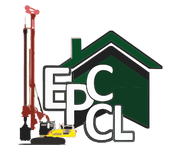Our Services
Let Extreme Piling And Construction take care of you projects
Our Services
Leverage on our flawless planning and, quality construction and our timely project execution today. We offer top-notch construction services to make your dreams come true.
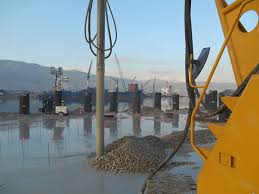
Stone Column
Stone Column is a ground improvement technique used to improve the load bearing capacity and reduce the settlement of soil. It is also called granular column, granular piles or vibrio-placement.
METHOD
It involves construction of sense aggregate column of stones by means of suspended down-whole vibrator.
BENEFITS
- Improves the ground by reducing soil settlement
- Absorbs more load than soil and reduces overall settlement due to its higher modulation of elasticity than that of soil
- Useful in waterlogged areas
- Increases the bearing capacity of a site, thus making it possible to use shallow foundation on the soil; thus saving cost and time.
- Reduces total and differential settlement.
- Accelerates the rate of consolidation in cohesive soil by providing drainage to water.
.
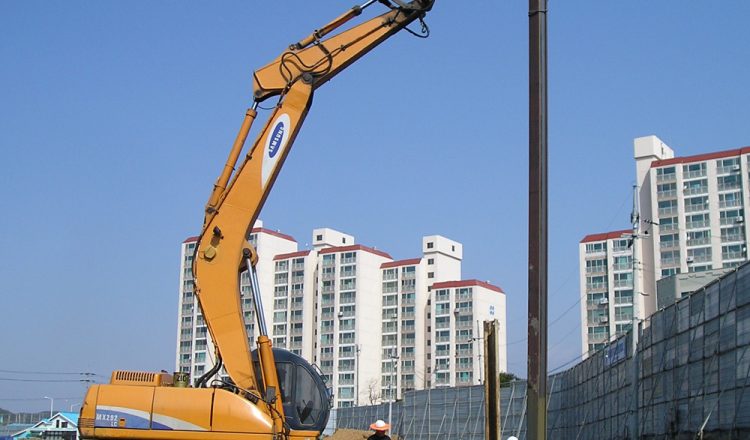
Bored Piles
Also known as the replacement pile,this is a commonly used form of building foundation that provides economical load bearing and walling solution suited to a wide range of ground conditions and application.
METHOD
It involves boring a circular hole into the ground, installing steel reinforcement and filling the borehole with concrete to form a pile.
BENEFITS
- Useful for very high load, shear or moment capacity.
- Useful in drilling into hard rocks
- Desirable in low noise and vibration designs
- Useful in overcoming adverse grounds, including natural or man-made obstruction.
- Can accommodate varying lengths of piles and ensures no risk of heaves.
- Suitable for bridges, tall buildings or industrial complexes
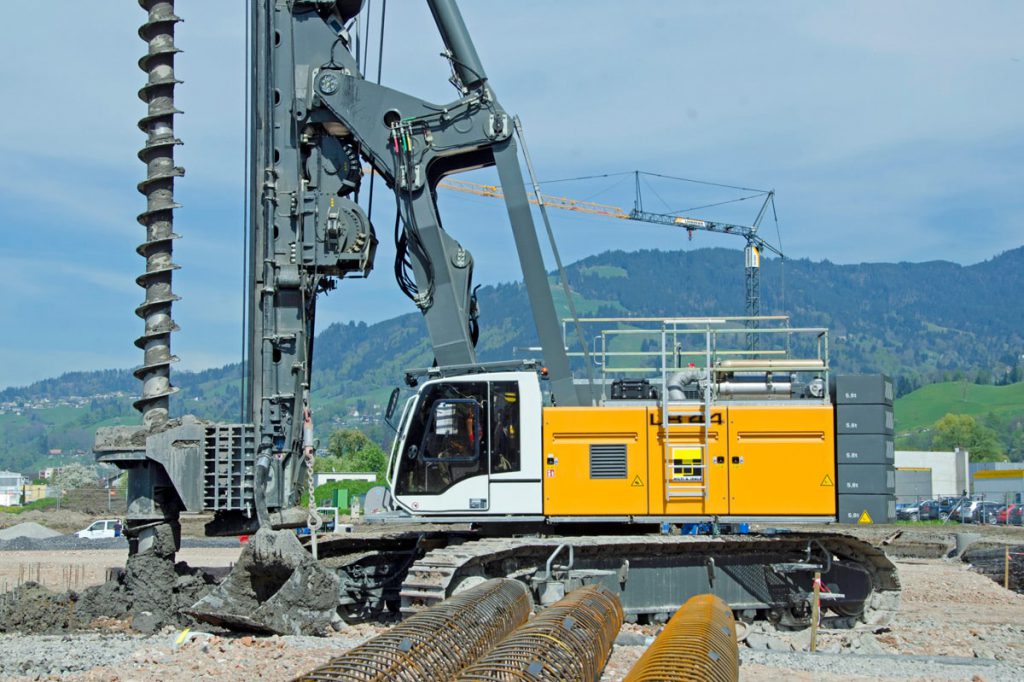
CFA
THE CONTINUOUS FLIGHT AUGER pile is another form of non-displacement pile.
A continuous flight auger drill is used to excavate a hole and concrete is injected through a hollow shaft under pressure as the auger is extracted. Reinforcement is then inserted after the auger is removed. This creates a continuous pile without ever leaving an open hole.
Continuous flight augering can be used to construct a secant piled wall which can be used as a retaining wall or as shoring during excavation. Once initial piles are set with concrete, other shafts are augured between them, slicing into the original piles, with the new ones receiving rebar. The finished result is a continuous wall of reinforced concrete that aids and protects workers during excavation
METHOD
Unlike in the case of bored piles where the three processes of earth boring, installation of reinforcement and concreting are taking place in a separate step-wise order, in CFA, boring and concreting takes place simultaneously.
BENEFITS
- There is minimal disruption of the earth crust since there is no use of casing
- Useful in unstable soil strata.
- It is especially important in sites where there is need to significantly reduce noise
- Useful in making large projects where minimum vibration is desirable.
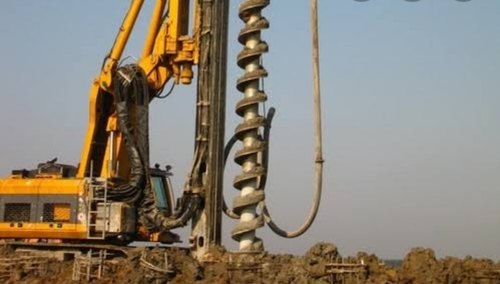
Micro Piles
Micropiles are small in diameter, high performance, high-tensile strength, non-displacement piles, usually measuring between 5-12 inches (114-400m). A typical micro-pile is comprised of a high tensile strength steel casting, rebar and grout. It is specially drilled and reinforced to bear most of its loading on the high capacity steel reinforcement.
METHOD
Drilling and flushing
Withdrawal of drilling string
Insertion of steel reinforcement and grouting.
Completion of micro-piling
BENEFITS
- Micro-piles are generally useful when there are different ground conditions such as natural or man-made obstructions, sensitive ground with adjacent structures, limited access, low headroom and/or karstic geology.
- Useful in replacing deteriorating foundation systems, for renovation of structures, to support structures affected by adjacent construction, for seismic retrofitting or in-situ reinforcement, including embankment and landslide stabilization.
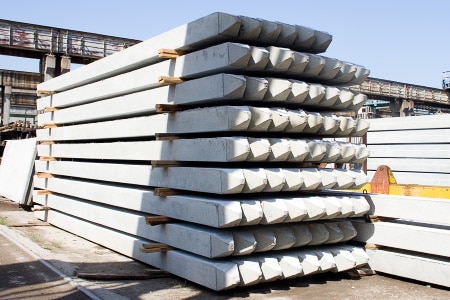
Precast Pile
Precast pile is a pre-fabricated, pre-stressed, high-tensile strength concrete column, moulded into various forms (circular, square, rectangular, octagonal) and impact driven into the soil by means of an adjustable hydraulic or diesel hammer
METHOD
Positioning of prefabricated concrete pile.
Driving of pile into the soil with an impact pile driving hammer either through the use of diesel hammer or hydraulic drop hammer.
Controlled driving of pile into the resistive soil layer to reach the depth of the measured pile.
BENEFITS
- Ideal for cost effective Piling in homogenous Geotechnical conditions, and for carrying low to medium loads
- Adequate for soil profile with very weak resistance in the upper strata where excess use of concrete can be expected when installing cast in-situ piles.
- No soil removal or architectural deformation of earth is involved
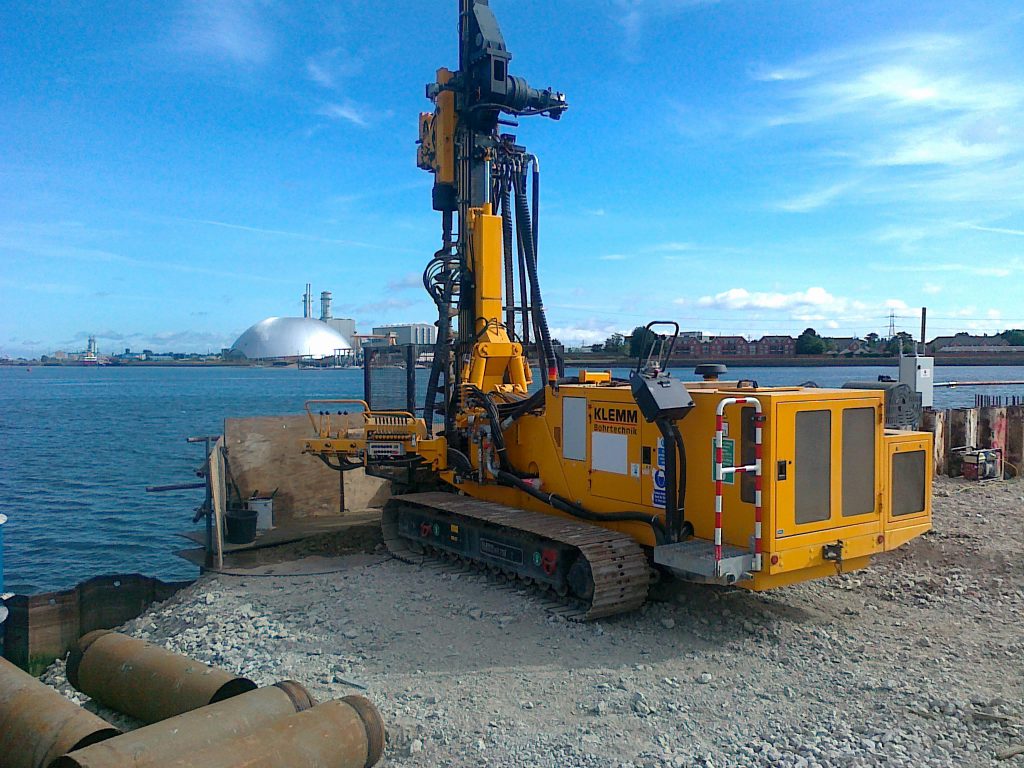
Jet Grouting
Jet Grouting, also known as Pressure Grouting is a technique of soil stabilization which involves the injection of a stabilizing fluid into the soil under high pressure and velocity.
METHOD
The grout may be a cementitious, resinous, or solution chemical mixture. The greatest use of pressure grouting is to improve geomaterials (soil and rock). The purpose of grouting can be either to strengthen a formation or to reduce water flow through it. It is also used to correct faults in concrete and masonry structures. Since first usage in the 19th century, grouting has been performed on the foundation of virtually every one of the world’s large dams, in order to reduce the amount of leakage through the rock, and sometimes to strengthen the foundation to support the weight of the overlying structure, be it of concrete, earth, or rock fill. Although pressure grouting has become an essential ground engineering construction procedure – practiced by specialist contractors and engineers around the world – it must be stressed that, from design to implementation, pressure grouting is an interactive and iterative process, requiring expertise and cooperation across a variety of disciplines. Both experience and expertise are therefore absolutely essential for successful project-realizations.
BENEFITS
- Allows large cemented material column without causing huge ground disturbances
- Improves the mechanical properties and decreases the porosity of soil
- Aids work condition in a confined space.
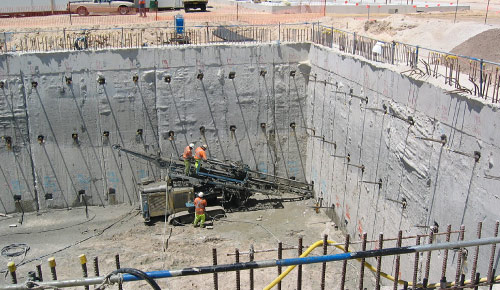
Diaphragm Wall
A diaphragm wall is a reinforced concrete wall, constructed using a narrow trench excavated on the ground and supported by an engineered fluid until the mud is replaced by the permanent material.
METHOD
Construction of the guide wall
Excavation to form the diaphragm wall trench
Supporting the trench cutting using bentonite slurry
Inert reinforcement and placing of concrete to form the wall panel.
BENEFITS
- Can be used as permanent structural wall.
- It is water retaining.
- Can be installed to deeper depth and for low bearing element.
- Less temporary propping needed.
- Can be applied for top-down construction method.
- It forms a rigid structure so that ground movement induced by basement excavation is less than other flexible retaining wall.
- Vibration and noise generated from installation of diaphragm wall is less.
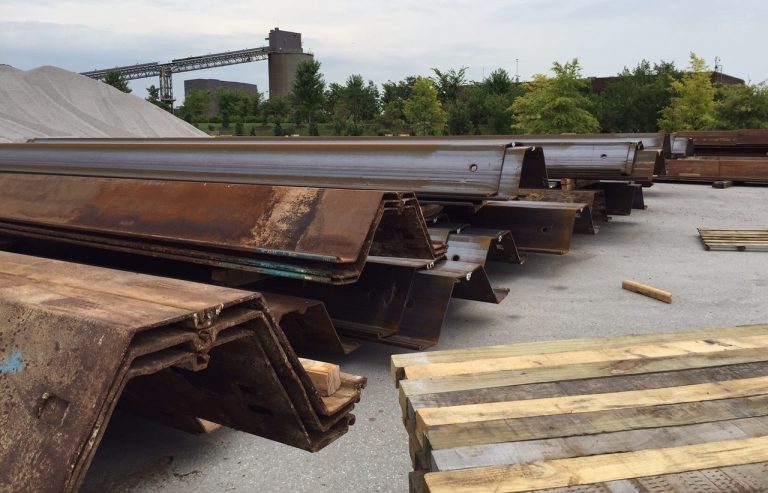
Sheet Piles/ Metallic Bracing
Sheet-piles are sections sheet materials with interlocking edges that are driven into the ground to provide earth retention and excavation support. Sheet-piles are most commonly made of steel but can also be formed of timber or reinforced concrete.
Sheet piles are commonly used for retaining walls, land reclamation, underground structures such as car parks and basements, in marine locations for riverbank protection, seawalls, cofferdams, and so on.
The selection of sheet piling is dependent on factors, such as:
- The type of work, for example. whether it is permanent or temporary.
- Site conditions.
- The required depth of piles.
- The bending moments involved.
- The nature of the structure.
- The type of protection required
Reinforced concrete sheet piles are formed using precast concrete members, usually connected together by tongue and groove joints. They are commonly used in permanent river embankments, canals and other marine structures. The toes of the piles are usually cut with an oblique face to facilitate easy driving and interlocking, while the heads are finished off by casting a capping beam.
Steel sheet pile is the most common form of sheet piles as it has good resistance to high driving stresses, excellent water-tightness, and can be increased in length either by welding or bolting. They are connected by interlocking
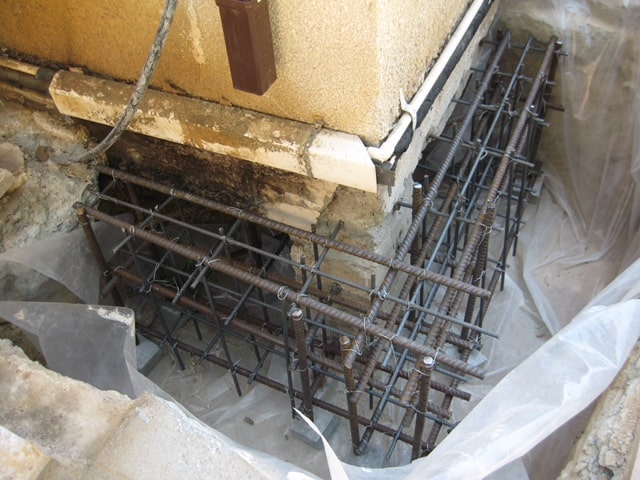
Under Pinning
Underpinning is the process of reinforcing and strengthening the foundation of an existing building or other structures, as necessitated
BENEFITS
Underpinning may be necessary for a variety of reasons:
- The original foundation isn’t strong or stable enough.
- The usage of the structure has changed.
- The properties of the soil supporting the foundation may have changed (possibly through subsidence) or were mischaracterized during design.
- The construction of nearby structures necessitates the excavation of soil supporting existing foundations.
- To increase the depth or load capacity of existing foundations to support the addition of another storey to the building (above or below grade).
- It is more economical, due to land price or otherwise, to work on the present structure’s foundation than to build a new one.
- Earthquake, flood, drought or other natural causes have caused the structure to move, requiring stabilisation of foundation soils and/or footings.
Overview
We are a force to reckon with in special foundations, soil improvement, shoring and bracing, and micro-tunneling. We stand shoulders high in Geotechnical work of any kind; through provision of suitable solutions to our clients, with utmost professionalism and efficiency, adaptation of recent technique and resources to the specification of each project.
Get In Touch
- +234 706 298 9440
- +234 817 287 2026
- enquiries@extremepiling.com.ng
- 1, Adetunji Obawole Street, Magodo Phase 2, Shangisha, Lagos State
